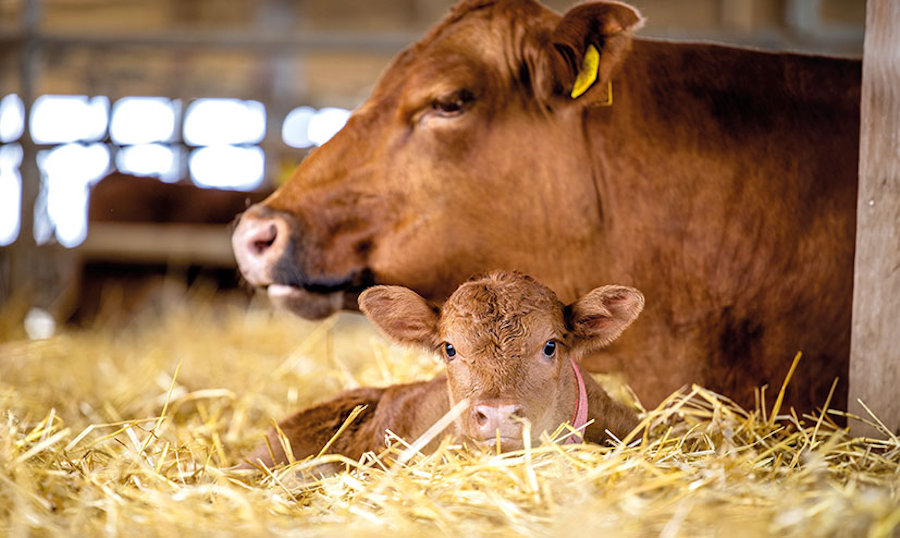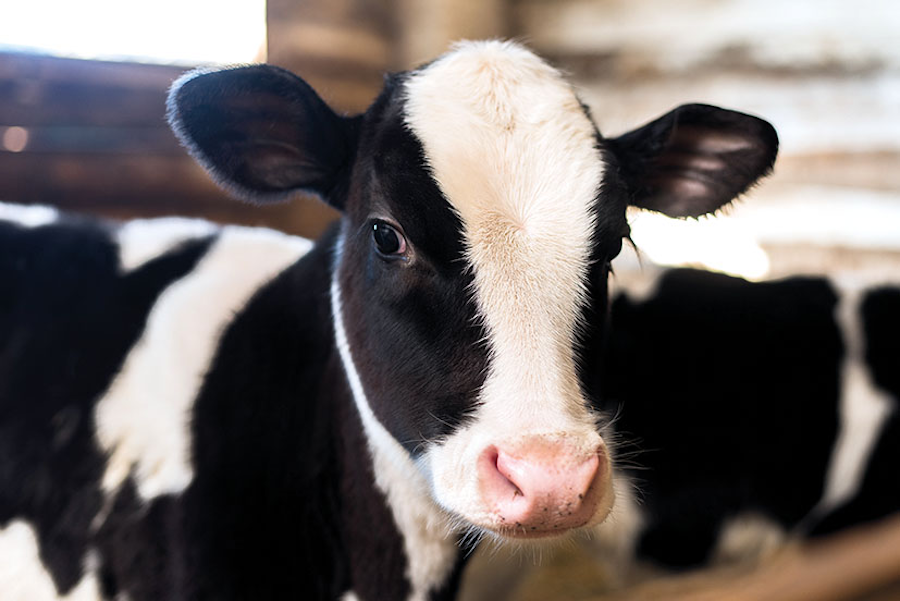Two farms share tips on tackling pneumonia
1st February 2024
Pneumonia is one of the leading causes of death in dairy and beef calves and costs the industry around £50 million a year. In its most recent GB Calf Week, AHDB hosted a range of expert panels to offer top tips on how to tackle the disease. Sarah Kidby reports on improvements made on two farms.

Investing in buildings
Dairy farmer Mike King, who rears both heifers and beef calves, was experiencing higher levels of pneumonia than expected – in double figures per 100 calves. Having spoken to their vet it became clear that the problem was coming from the early period around four weeks of age and series of changes have brought big improvements, Mike explained. As well as good disease control and reductions in antibiotic usage, their age at first calving is 23.6 months and they meet target bulling weights within 400 days – or in most cases within 12 months.
Updating their housing was the natural step, he said. Their previous buildings didn’t have the capacity for expansion, so the new shed has been designed to hold 100-120 calves and give a couple of pens a rest, though this will need to be expanded as the herd is growing. Previously they had two calves per pen but moved to groups of 15 – though this has since expanded to 20 due to bTB. This has added stress and made it more important than ever to stay on top of scour.
Despite the benefits of whole milk, the farm has moved away from this due to concerns about the risk of disease transmission.
The farm also invested in infrared heaters and ventilation tubes, which Mike said work very well. They have since restricted the air flow on the prevailing wind side which has given better functionality to the tube ventilators.
Additionally, the farm began a pneumonia vaccination programme – initially just for black and whites but later for all calves and there have since been very few pneumonia cases. Where they do get a case, they follow the farm protocol for antibiotic treatment and quite often use NSAIDs as well. Temperatures are taken regularly and calf behaviour is observed. The farm’s vet Kathryn Hart from George Vet Group noted that calves are very milk driven so will often still feed even when sick, so it’s a good idea to see how quickly they drink, and how much. Colostrum management blood sampling is also done regularly.
Sharing the long term aims of these changes with the whole team has helped to get buy in from staff, Mike said, and they have regular meetings and use WhatsApp groups to share updates.
“Like farming in the clouds”
Adam and Holly Atkinson, meanwhile, farm organically in south Devon, with a spring calving system and 650 Kiwi cross cows at peak season (mid-February – end of April). The couple places a lot of emphasis on soil health and the right species of grass to retain moisture on their drought-prone land. Previously they calved throughout the whole nine-week calving window, but have since begun using sexed semen and kept a tight block – with their dairy heifer replacement calves coming through in the first four weeks.
In the first year’s cohort they treated 75% of calves for pneumonia but none of the 2023 cohort required treatment – instead they have been able to get in early with NSAIDs and supportive care.
Smoke bombs set off in their old timber buildings in 2020 revealed the inlets and outlets were very limited. Consequently, in their old shed they took off all the cladding and space boarding along each side which improved the inlets and gave a nice, steady airflow into the building. The outlet is something they still need to consider as it’s a bigger structural job. Making use of all the space and significantly reducing stocking density also had a massive impact on management. As has improving straw quality, reducing dust and putting bales into the housing to block drafts in older buildings at calf level. Holly said the key thing is to walk into any building, especially if you’re adapting an old building, and see if it’s comfortable – if it’s comfortable for you, it will be comfortable for the calf.
Initial weighing and monitoring are important on the farm and they check iodine levels, blood sampling, body condition and colostrum quality for every animal. Groups are large so good management is vital – particularly hygiene. Protocols are in place to ensure the environment is consistent and bedded up every day with fresh water and concentrate feed and straw forage available from day one.

Previously calves used to go into a training pen then join a larger group of 40 but they now go straight into the larger group. This approach wouldn’t work for every farm, Holly acknowledged, and it means on a busy day she may have 25–30 calves to train directly onto a milk trailer – but they have found that less changes to the environment works better for them in reducing stress and the risk of hygiene breakdowns. Groups are within a week or a maximum of two weeks’ age difference to avoid spreading disease from the oldest to the youngest.
The farm uses milk trailers, ensuring 10–15% free space so there’s no competition for teats. Feeding areas were blocked off in the 2022 season to help keep moisture away from the bedded areas.
Moisture in the sheds has been an issue as being a coastal dairy farm is very much “like farming in the clouds” and can result in bedding becoming saturated, Holly commented. Even if rainfall is not too high, there can be a lot of moisture in the air. For this reason, a key part of the farm’s disease management is getting calves out of the shed as soon as possible, certainly around 3–4 weeks old. Adam and Holly cut a square out of the back wall to allow calves free access to outdoors for fresh air and enrichment.
Another change since 2020 is that they do not restrict whole milk intake until 6–8 weeks and are weaned at 12 weeks. They are fed twice a day till 4–6 weeks then once a day, with calves having around 6–8-litres/day though this varies by size.
Read more livestock articles here


